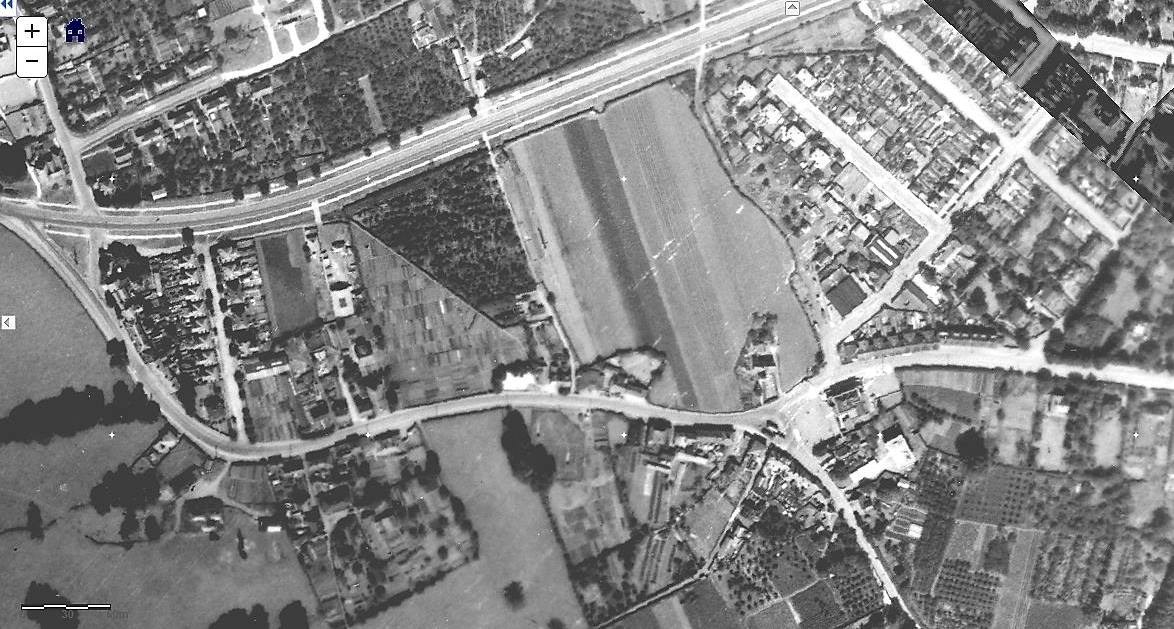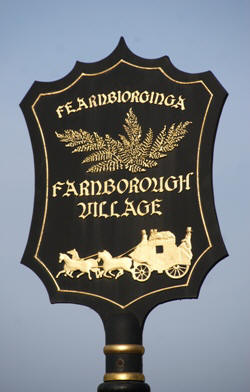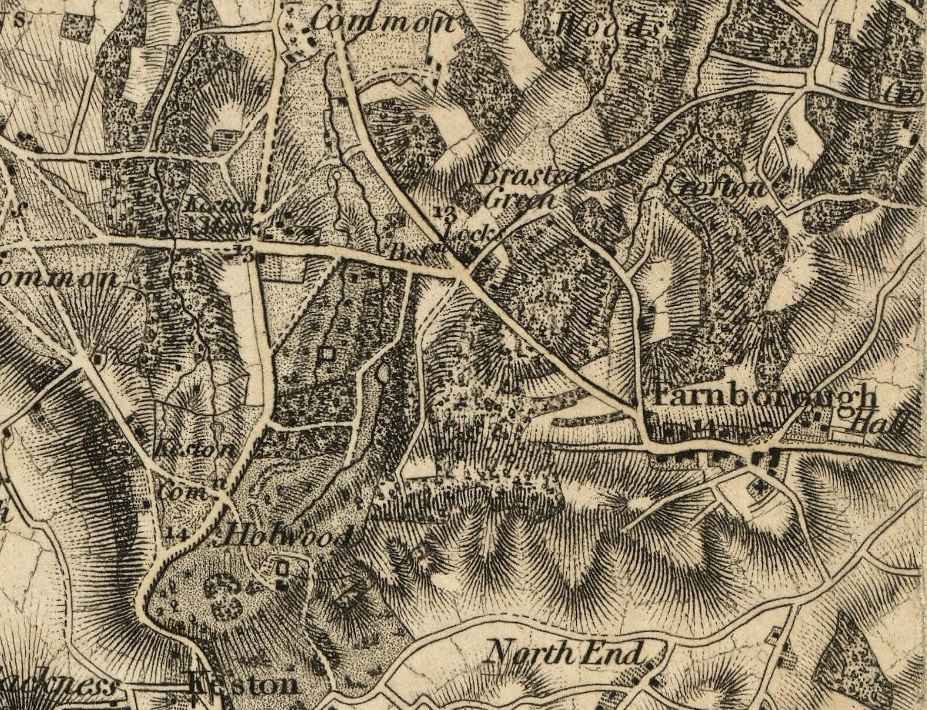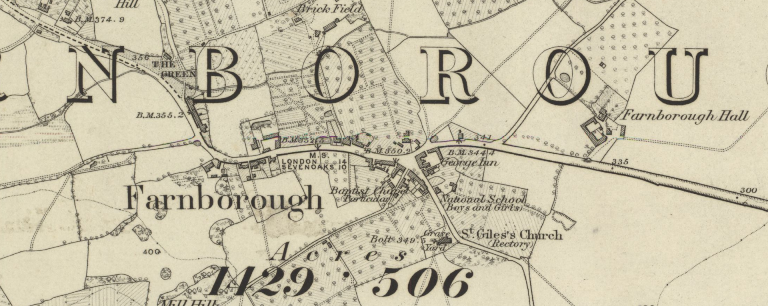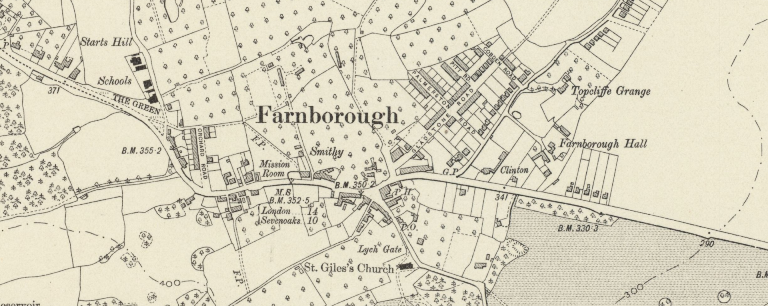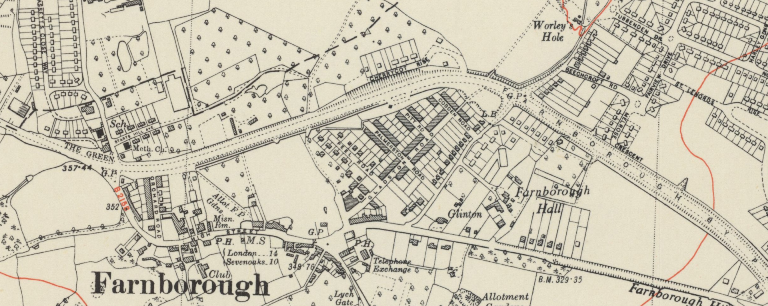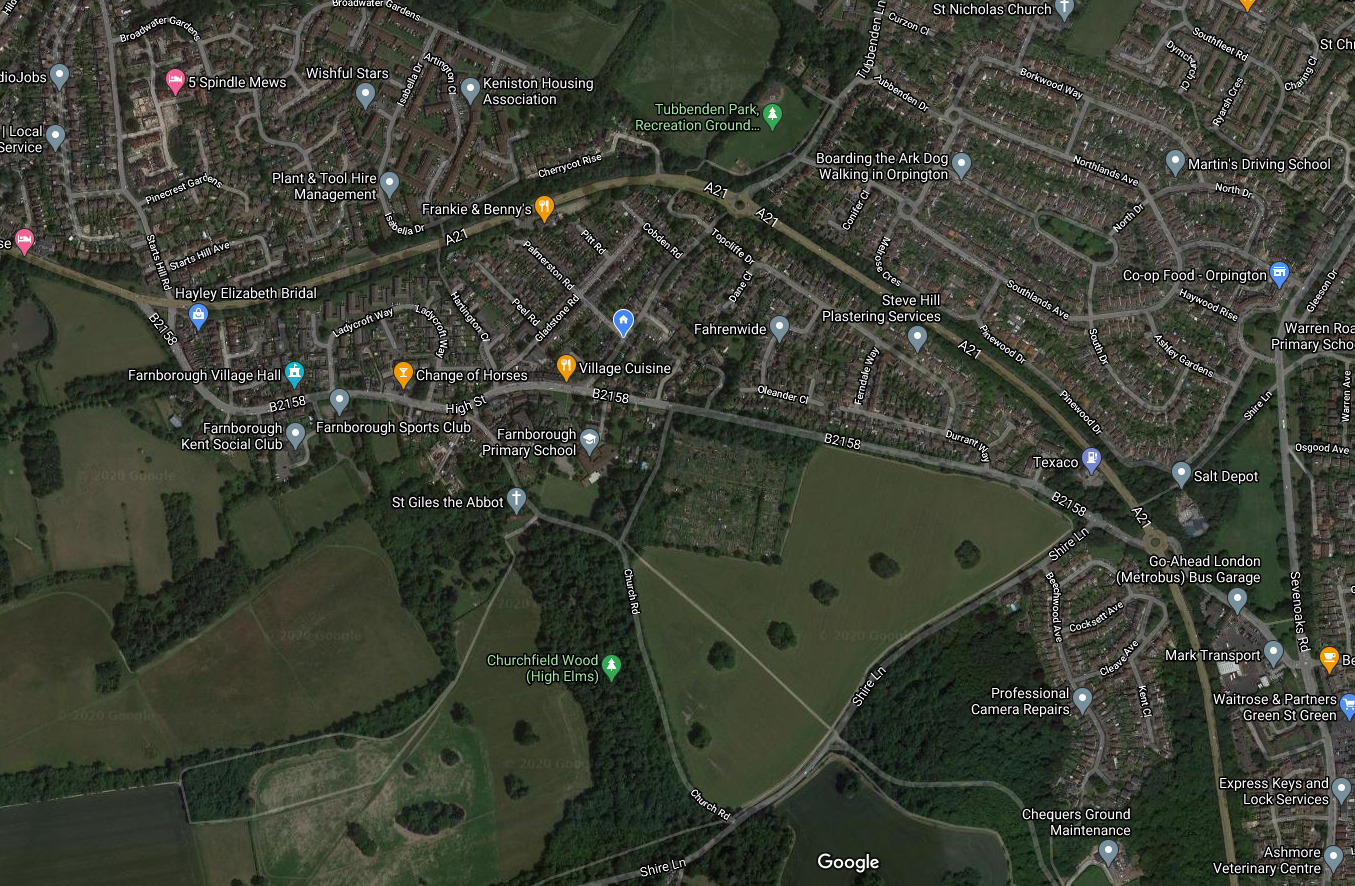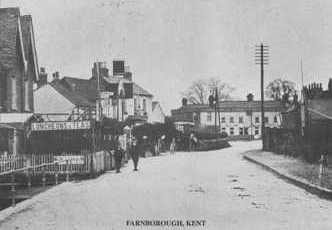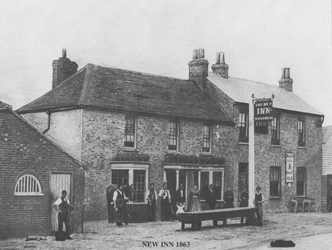


FARNBOROUGH VILLAGE
FARNBOROUGH, now in Greater London but formerly in Kent, should be distinguished from the better known Farnborough in Hampshire and from places of the same name in Berkshire and Warwickshire. It is a village on the high road to Sevenoaks, Tonbridge and Hastings, 14 miles from London, and about 350 feet above sea level.
The village is not mentioned in the Doomsday Book although the manor existed in the middle ages, and in the 1200s was held by Simon de Montfort.
The section of the High Road between Bromley and Sevenoaks became a turnpike road in 1749. This was of considerable importance to the development of the village, which provided services and provisions to the coach operators and their passengers. This heritage is reflected in the village sign, see above. The central part of the village retains a shape and character that would be recognisable to a visitor from many centuries past. One reason for this is that the railway never came to Farnborough, although there were many proposals.
Ordnance Survey Maps
Here are extracts from Ordnance Survey maps from 1809 through to 1950. They are copyright Ordnance Survey, and are downloads from the National Library of Scotland website Click on images to enlarge.The black and white photographs below were taken 1949-1951, click to enlarge. Contrast these with this modern image taken from Google above.. Click on this to explore with Google street view..
